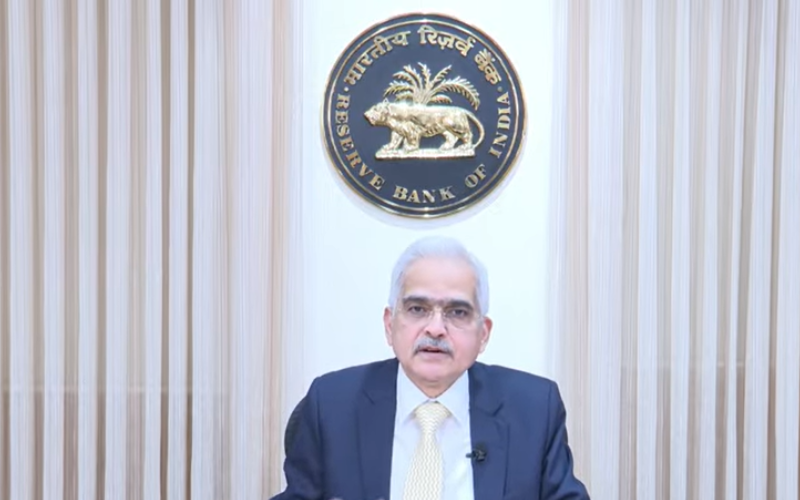In the first monetary policy statement of 2024, the Governor of the Reserve Bank of India (RBI), Shaktikanta Das, on Thursday announced that the Monetary Policy Committee (MPC) has decided to keep the repo rate under the liquidity adjustment facility (LAF) unchanged at 6.50%. The decision has been taken on the basis of an assessment of the current and evolving macroeconomic situation.
The standing deposit facility (SDF) rate also remained unchanged at 6.25% and the marginal standing facility (MSF) rate and the Bank Rate stood at 6.75%. The MPC also decided to remain focused on withdrawal of accommodation to ensure that inflation progressively aligns to the target, while supporting growth. The real GDP growth for 2024-25 is projected at 7.0% with Q1 at 7.2%; Q2 at 6.8%; Q3 at 7.0%; and Q4 at 6.9%.
Here are some of the additional measures that has been announced:
1. Review of the Regulatory Framework for Electronic Trading Platforms (ETPs): The Reserve Bank’s extant regulatory framework for electronic trading platforms (ETPs) was issued in 2018. In view of the subsequent developments in markets, products, and technology, etc., a revised regulatory framework for ETPs will be issued for stakeholders’ feedback.
2. Hedging of Gold Price Risk in the Over the Counter (OTC) Market in the International Financial Services Centre (IFSC): In December 2022, the Reserve Bank had permitted resident entities to hedge their gold price risk in recognised exchanges in the IFSC. It has now been decided to also allow resident entities to hedge the price of gold in the over the counter (OTC) segment in the IFSC. This will provide more flexibility to resident entities in hedging their exposure to gold prices.
3. Key Fact Statement (KFS) for Retail and MSME Loans & Advances: At present, the loans and advances availed by borrowers, apart from including the rate of interest, also include other fees and charges such as processing fees, documentation charges, etc. To enhance transparency in disclosure of such information, the Reserve Bank had mandated certain categories of lenders to provide the borrower a Key Fact Statement (KFS) containing essential information such as the all-inclusive annual percentage rate (APR) and recovery and grievance redress mechanism. The requirement of KFS is now being extended to cover all retail and MSME loans. This measure will lead to enhanced transparency in lending and enable customers in making informed decisions.
4. Enhancing the Robustness of AePS: Aadhaar Enabled Payment System (AePS) has played an important role in financial inclusion by enabling customers to make digital payment transactions through service providers such as business correspondents. Given their significance, it is proposed to streamline the process for on-boarding of AePS service providers and introduce some additional fraud risk management measures. These measures will further strengthen the security of the AePS system and enhance its robustness.
5. Principle-Based Framework for Authentication of Digital Payment Transactions: Over the years, the Reserve Bank has proactively facilitated introduction of various mechanisms such as Additional Factor of Authentication (AFA) for securing digital payments. While no particular mechanism was specified by the Reserve Bank, SMS-based OTP has become very popular. With technological advancements, however, alternative authentication mechanisms have emerged in recent years. Therefore, to facilitate adoption of alternative authentication mechanisms for enhancing the security of digital payments, it is proposed to put in place a principle-based framework for authentication of such transactions.
6. Introduction of Programmability and Offline Functionality in Central Bank Digital Currency (CBDC) Pilot: The CBDC Retail (CBDC-R) pilot currently enables Person to Person (P2P) and Person to Merchant (P2M) transactions. It is now proposed to enable additional functionalities of programmability and offline capability in CBDC retail payments. Programmability will facilitate transactions for specific/targeted purposes, while offline functionality will enable these transactions in areas with poor or limited internet connectivity.








